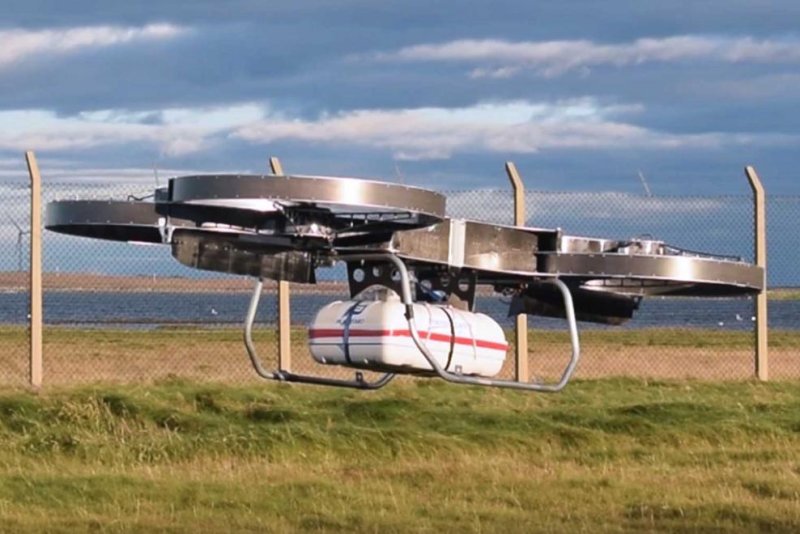The JTARV, or Hoverbike, that could be used to resupply troops on the battlefield. Photo courtesy Malloy Aeronautics
Jan. 19 (UPI) -- A quadcopter that could be used to supply troops on the battlefield has been demonstrated by the U.S. Army Research Laboratory and industry partners.
The vehicle is called the joint tactical aerial resupply vehicle, or JTARV. It is also known as the Hoverbike, manufactured for the ARL by Malloy Aeronautics and systems integrator, SURVICE, an engineering company.
Researchers envision a future JTARV flying low to the ground or at thousands of feet at speeds of 60 miles per hour or more, the Army Research Laboratory said.
"Anywhere on the battlefield, soldiers can potentially get resupplied in less than 30 minutes," said Tim Vong, associate chief of ARL's Protection Division, who likened the JTARV concept to "Amazon on the battlefield."
The current prototype demonstrated at the Aberdeen Proving Ground in Maryland is electric, but ARL researchers are looking at a hybrid propulsion system that could dramatically increase range to as much as increasing 125 miles with a payload capacity of as much as 800 pounds.
"We're also looking to integrate advanced intelligent navigation and mission planning. We're looking to end up with a modular, stable platform that can be used for even more dynamic and challenging missions," Vong said.
The JTARV is now a joint effort with the Marine Corps, led by Army researchers, at the Army Armament Research, Development and Engineering Center at Picatinny Arsenal, New Jersey, though the ARL researchers still serve as subject matter experts on aeromechanics, assessment, analysis, propulsion, intelligence and controls and materials and structures.
In addition to other industry, government and academic partners, the Office of Naval Research has joined the project.
Researchers hope to demonstrate the vehicle with full autonomy in the near future, Vong said.















